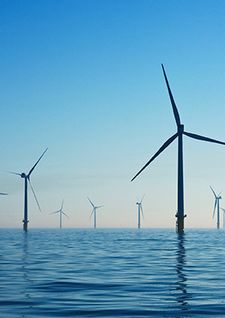Rod Morrison: Okay. One quick thing, Quentin, I don’t know how you see the supply chain evolving over time. Is it simply a question of evolving?
Quentin Slight: Local industry is building its capacity. They are already suppliers to existing projects, so it’s really a question of time and of getting experience on existing projects. They may not be able to meet 100% of what was originally envisaged but that doesn’t negate the fact that they are gaining experience and then, with the stability promised by Round 3, that will give the industry confidence to invest and build out sustainable capacity.
One more thing on PPAs. Something unique to Taiwan as I understand it is, if you enter a corporate PPA and that corporate goes insolvent, then you can automatically flip back to an underlying Tai Power off-take contract at a tariff price effective at the time of entering the corporate PPA. Assuming there are no changes in coming years, then that’s very important to the development of the corporate PPA market. In effect, you are only ever taking the delta risk between the corporate tariff and the Tai Power tariff.
Rod Morrison: I was going to say that sounds too good to be true, but it sounds very attractive. Anyway, if we could move on to South Korea. In South Korea we’re at a different stage of the market’s development; it’s very much evolving, embryonic. Sorry, no projects yet but projects coming. So, it’s a slightly different discussion.
To start us on that discussion is Joo Hee from Linklaters.
Joo Hee Lee: Thank you, Rod. It’s very exciting for me to bring my experience and learning back to my home country.
As mentioned, the Korean government has set ambitious goals to change the country to green energy, including a target to increase the share of renewable energy to 20% by 2030. This target will not be achieved without offshore wind.
This means 12GW of offshore wind by 2030. And, as Ryan mentioned, given the current offshore wind capacity in Korea this is a very, very ambitious target. Progress, so far, has been slow in comparison to Taiwan. Projects in Korea are sourced and developed privately by developers, which no doubt brings more challenges to international developers which do not have a local presence and a local team.
The legal and regulatory framework is all in the Korean language and based on a civil law system. That said, despite the slow progress, the Korean government remains very keen to change to green energy, an ambition not just driven by an international commitment to reduce carbon dioxide emissions but also strong local demand for cleaner air, which has become a political agenda, and difficulties in securing a location or site for nuclear waste disposal - the government has had numerous failed attempts to agree a site for nuclear waste disposal.
In July last year, the government held an inter-ministerial meeting to discuss ways to promote offshore wind. It became very clear after the meeting that the government is aware of the key challenges to be addressed. These include the overly complex permitting process and the late timing of the Renewable Energy Certificate (REC) multiplier, which means that developers and lenders only know the exact amount of revenue from a project around the completion date. That is obviously too late.
Thirdly, gaps in local participation where there are insufficient funds available for projects. Last thing, a lack of transparency in securing local community support.
It is very positive that the Korean government is aware of these issues and that they are taking measures to address them, but more still needs to be done. Strong support is reaffirmed by the Korea Renewable Energy 100 programme announced at the beginning of this year, and a draft special act on offshore wind in May, which includes formation of a new wind power development committee to act as a one-stop shop for all permitting requirements in Korea.
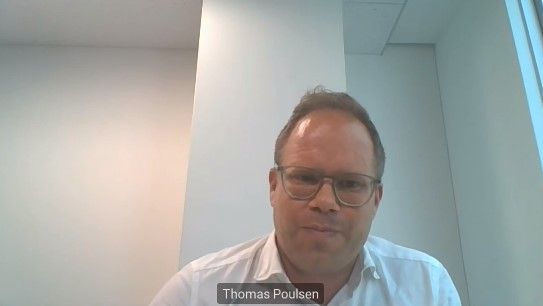
Rod Morrison: Thanks very much Joo Hee. Moving on to Gordon. How do we transition from Taiwan to South Korea? Is it a transition from one to the other or is it a totally new playing field?
Gordon White: There are similarities but there are also some fundamental differences as well. The way I would characterise it is that, as an international bank looking at the offshore wind opportunity in Korea, we’re a bank with a branch in Korea. Think back four or five years ago when we first started to look at Taiwan, look at it as an international bank with branches in Taipei and Kaoshung. I think I see a lot of similarities. And I think many similar questions are now being asked. The opportunity is there and laid out, as Joo Hee summarised, so I think that’s obviously attracting a lot of attention from developers and from banks as well.
There are still a lot of questions in terms of how exactly the financings are likely to pan out and what role an international bank will play in that market. Will it be dominated by the Korean banks, obviously the most liquid in terms of local currency? Or will there need to be some sort of collaboration with international banks and ECAs bringing knowledge of offshore wind? They would bring a level of confidence in multi-contract structures that are not, perhaps, the standard approach for Korean project financing but that can be applied successfully to offshore wind. A bit of a joint effort between experienced international ECAs and the less-experienced Korean banks would work well.
That’s doing an enormous disservice to the likes of KDB, however, which already has enormous experience in international offshore wind markets, both in Europe and Taiwan. The dynamics maybe a little bit different but, to some extent, the position of the international banks just reminds me of when we were first starting to look at Taiwan.
I will be very interested to see how the market pans out. Hopefully, it will be an important market for us, and it is something we’re tracking very closely. We’re keen to play a role in it.
One final point. It’s also worth making the comparison to Japan where Japan’s first offshore wind projects were financed by Japanese banks. But whether the Japanese banks have sufficient liquidity to deliver on the full opportunity and to meet targets is open to question. Initial financings may be done with the local banks in Korea, but will international banks play a role later? I don’t know.
Rod Morrison: We’ll get on to Ryan of KDB next but, yes, interesting. Korean banks talk a lot about project financing overseas whereas Taiwanese banks haven’t. I guess that’s one issue.
Thanks Gordon. Moving on to Ryan Shin who is at Korea Development Bank (KDB). Your thoughts on the market, please, and the issues that Joo Hee raised.
Ryan Shin: It’s good to know that most of us have pretty much similar ideas and perspectives about the market as it is right now. I agree with much of what has been said.
Regarding the challenges we have. Well, we have a very ambitious goal in front of us. The government is really pushing hard on this, but the reality is that the market is not moving fast. It’s not just the number of the decision makers involved in the various departments of central government but, even worse – and I’ll try to be careful with my wording here, it’s the local governments, the community mayors. They are also involved in this process. And local governments are very sensitive to the views of local resident as every four years they face elections. So, in effect, residents are also involved and that raises the questions of are they ready to accept this project? I mean, what about fisheries? Fish is a very important dish for Koreans.
The problem comes when you go down to the local county level, depending on which county you go to, where they have their own regulations, which sometimes go against national law. We’re seeing those kinds of contradictions between national and local government.
So, that’s the hurdle that the government has to go through, the sponsors have to go through, the lenders have to go through.
The other problem is the curtailment issue. I don’t know much about the east coast, because most of the east coast offshore wind farms would be the floating ones and it’ll take time for their installation. But the problem is on the west of the peninsula, where most of the offshore wind farms are, especially in the Jeolla province. Up to now everything is okay as we’re not seeing much curtailment, but if all the offshore wind farms pledged by the government are successful then we’re going to face serious congestion.
Now Jeju Island, which is right below the peninsula, we saw some curtailments last year and this issue is getting worse. Last year, the government, enacted legal grounds for curtailment, and they’re not going pay any compensation. That’s also an issue that we should be thinking about.
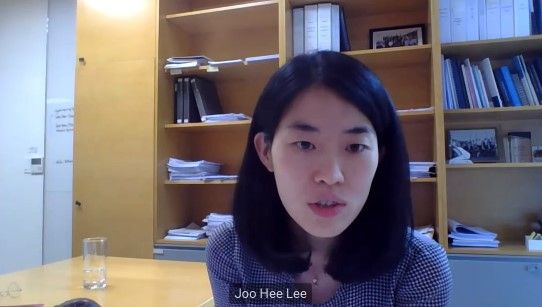
I think Seung Soo and Joo Hee also mentioned about the REC multipliers that are only fixed right before the Commercial Operation Date (COD). That’s one issue but the other issue is that the Ministry of Trade, Industry and Energy (MOTIE) can change the multiplier of each different source of energy every three years. So, after three years of construction, you could be facing the risk that the multiplier for an offshore wind farm could be changed. That is a real risk.
So, MOTIE understands the problem and I understand the government is trying hard to fix this. Unofficially, they have said they will give an official letter beforehand to the project so there will be no problem with the financing. But that was an informal response we received from the government, and we haven’t seen any official response so far.
Domestic supply chain. This is quite critical and politically sensitive, so I’m not going to comment too much on it. But hopefully we have a lot in place: the contractor, the tower, the cables. I think we have some very competitive suppliers, but we all know that we are facing problems in certain area. I think the government also understands this problem and they’re trying to be very balanced between the international and the domestic suppliers.
So that’s the challenges and that’s why projects are not moving so quickly.
Rod Morrison: Gordon mentioned a multi-contractor strategy, or given the strength of Korean contractors are they using single contracting approaches?
Ryan Shin: That’s a very good point as well because I think Quentin also mentioned that there’s a lot of liquidity. The important point is, on what terms? So far, domestic lenders are not really used to the multi-contract or hybrid strategy. That will be a very challenging step for domestic lenders. We’ve been talking with the other domestic lenders because KDB is very comfortable with the offshore wind farm based on our experience abroad.
Some lenders have experience of one or two offshore wind projects abroad, so they know about multi-contracts. The response I’m getting from the other lenders is that if we have proven technology, importantly for the turbine, and if we have really strong sponsors coming in, then they are willing to accept this strategy. But we’ll have to see whether they can keep their words or not.
Rod Morrison: Great. So Seung Soo, tell us about your projects.
Seung Soo Han: Yes, development of the Korean market. I jumped into the Korean market about three years ago and I seemed to have jumped in at just the right time because the Korean government, particularly the ruling party, has really raised the game in terms of developing offshore wind projects here.
Through the development of a one-stop shop for offshore wind. the government is trying to cut down the permitting period from five or six years to three or four years. So, if they succeed with their plans than that will be helpful for developers like us.
Ryan mentioned the importance of local community acceptance. While the central government is supportive overall, local government support is subject to the specific county, city or provincial government, where the project site belongs.
If you are lucky and your county government is supportive for offshore wind, then you can get a lot of help. If the county government is sensitive to residents’ complaints, then I think you will need extra time.
That also depends on the location of the project as well. For projects a long way offshore, like a two-to-three-hour ferry ride away, then the local community is usually supportive. Overall, we’ve been lucky but still, in terms of regulatory clarity, local governments interpret rules in different ways, and this is one of the most challenging parts to overcome.
Rod Morrison: Great. We’ll check in with Quentin and then finish up with Thomas. Quentin, you’re excited about the Korean market.
Quentin Slight: Yes, absolutely. As I said earlier on, what’s important is the way in which funding is put together and the contractual terms. It’s been demonstrated in Europe over 20 years that it’s more cost competitive to go the multi-contract approach, and it is a strategy that has been adopted in Taiwan.
International players, such as ourselves played a part in Taiwan getting domestic banks comfortable with the multi-contract approach and I can see us playing a similar role in Korea. Making it sustainable, making it a competitive prospect for developers and making it competitive for the government in terms of tariffs.
The other aspect of the Korean market that we are very excited about is the potential for floating wind. I think MOUs for five projects of between 1GW and 1.5GW of capacity, have been signed by the likes of CIP, Macquarie’s Green Investment Group, Ocean Wind, Equinor, Total, and Shell. The leading developers and oil companies are seriously interested in investing into wind projects. Maybe we’ll see those projects come to fruition by 2025/2026.
The potential there is huge but what the projects need is scaling up. I think the potential in Korea for leveraging its industrial base and expertise is huge.
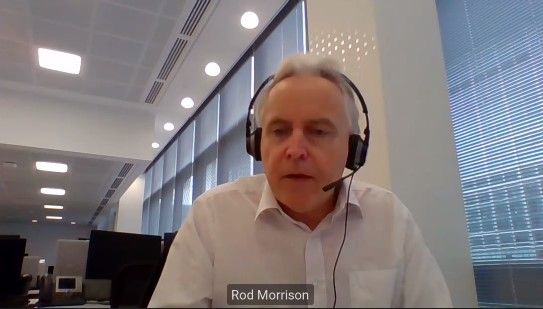
Rod Morrison: Great, thanks very much Quentin. Moving on to Thomas. Your views on the potential for you in the Korean market as an international developer, please.
Thomas Poulsen: The Korean market is certainly important for us as a developer and as an investor and we’re doing a number of different things. We are involved in a joint venture with Korea’s SK E&S for several projects, with the first one hopefully being brought to financial close next year. We are also, on our own, developing other projects in Korea. So, we are taking a very long-term view on the Korean market and hope to play an important part in the additional 12GW that will be realised by 2030. By the way, we expect that number will grow significantly towards 2050 when Korea aims to be carbon neutral.
Many things have already been said with which I agree. For example, the challenges in financing the first projects and the discussions around multi-contracting are the same as we had in Taiwan four years ago. That experience will be valuable in Korea when it comes to working with the local market and explaining the benefits of this approach.
Our approach is to have a very strong and experienced execution team that has done this kind of thing multiple times and are able to manage the risk, all the interfaces and can react when things happen.
It’s not so much a question of whether something goes wrong in the construction phase but more a matter of what you do when it does go wrong. Do you have the experience and the capabilities in the team to deal with it? Offshore construction is complicated, and it will be no different in Korea.
In terms of comparing, it to Taiwan. What Taiwan has done well is make it very clear what we need to do as a developer to obtain a site. It allows us to take a better view on the risk of developing the site, specifically in terms of deploying capital. They’ve done really well on that and been able to attract developers and risk equity.
Korea is also doing well in the early phase in terms of attracting developers and the available equity to develop these projects. I think where it’s a bit unclear is what it will take to get from this very early phase to financial close. Permits, agreeing off-take agreements and so on, and are there any conditions and, if so, what do those conditions mean? This is just a big unknown in Korea, whereas in Taiwan it was clearer, and you could form your own view of what it takes and how much you would have at stake.
This is where Korea is a bit different. It’s less transparent. We know that localisation is a huge agenda in Korea as well as Taiwan, but it’s not as clear as to what it means. This is where the markets really differ from a developer point of view - at least at this stage.
Rod Morrison: Great. We’ve had some great questions come in from the audience. One was on whether the Korean presidential election will make much difference to the programme.
Seung Soo Han: It seems to be my question. Yes, you’re right, the presidential election is in March of next year and on top of that, there are local government elections as well. The presidential election is a little complicated but even if the government and the president changes, my belief is that the government’s effort to promote offshore wind will continue even though the speed of development might slow a bit, depending on the party that wins.
More important are the local government elections, where projects are already playing a part in early campaigns. The good thing for Korea is that most of the projects are in the west and the southern part of Korea where that part of the country has returned the same party over the last few decades. So, although the local elections may bring some change, I don’t think that change will be massive.
Rod Morrison: Maybe Thomas or Gordon could talk about hydrogen. We’re seeing a lot more wind projects associated with hydrogen and its potential for the next five or 10 years. Is that something you’re looking at Thomas?
Thomas Poulsen: Yes, it’s definitely high on the agenda throughout the world. We have a specific response when it comes to hydrogen investment, and we have access to separate budgets for developments in Australia and Europe.
I think it’s probably surprised everyone how fast offshore hydrogen has developed just over the last one or two years, but this is going to grow fast. Whether you can then commercialise it and how quickly you can scale it is clearly something we follow very, very closely. It can also be an area for Korea and Japan.
The big question is whether they can produce it at a cost level that can compete with, for example, Australia.
Rod Morrison: Thanks very much Thomas. Just to wrap up Gordon you’ve got a couple of minutes.
Gordon White: In terms of hydrogen and its application and projects that I have personally been working on, I think we’re still not yet at a stage with hydrogen where we have commercial bankable structures for raising project finance debt. We’re at the pre-commercial side of things.
As an institution, we’re incredibly excited about the opportunity and it’s really a key part of the whole energy transition piece, which many of my colleagues across the globe are actively monitoring.
I understand my colleagues in America, for example, have recently financed some infrastructure related to developing the hydrogen economy, providing financing to fuel hydrogen stations in California, for example. Many of our customers are exploring ways to get into the market.
As yet I haven’t had to look at a project finance structure that applies to hydrogen. I think we’re a little away from the commercial bankable limited recourse structures applying to hydrogen. For other parts of the business, in particular the corporate banking business, and specific elements of the infrastructure chain, then it’s very much high on the agenda.
Rod Morrison: Great. Thanks to our panel. I think that’s an excellent discussion on Taiwan and Korea, ending up on something for the future as well. I’d just like to thank the panellists and thank everyone for listening and for the questions.
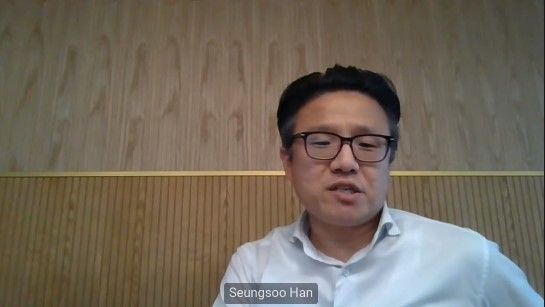
To see the digital version of this report, please click here
To purchase printed copies or a PDF of this report, please email gloria.balbastro@refinitiv.com
